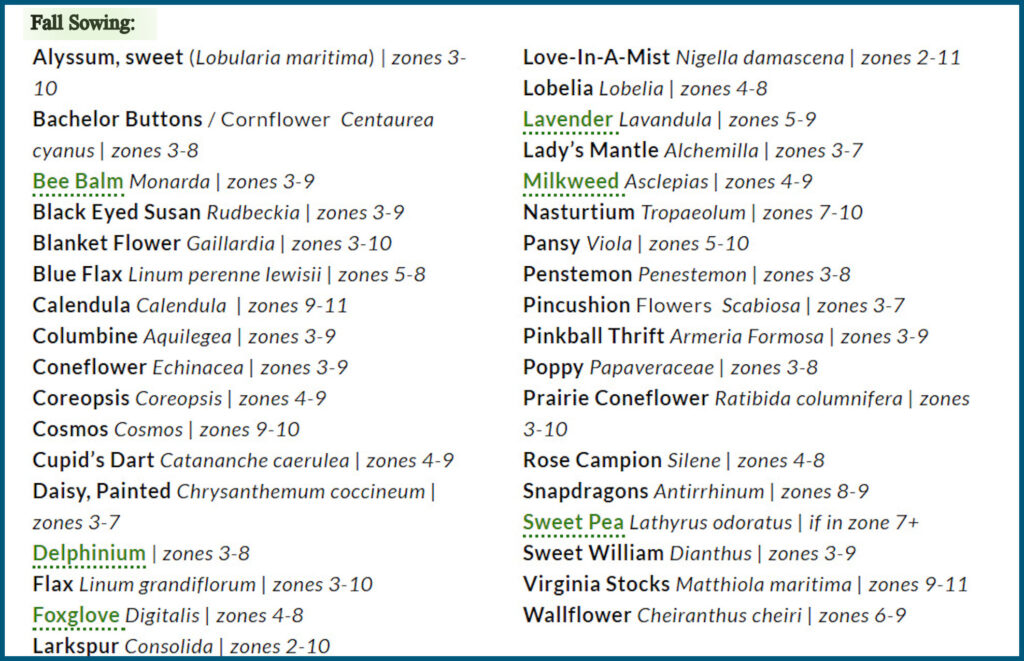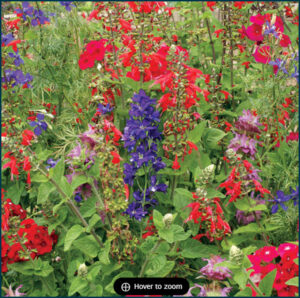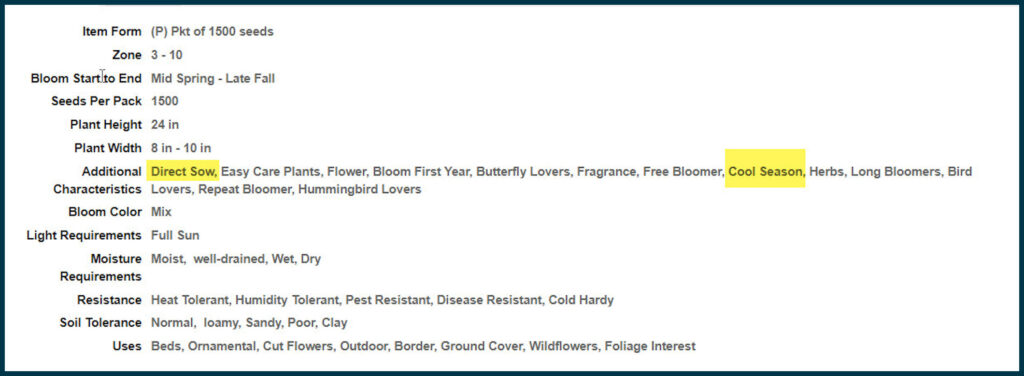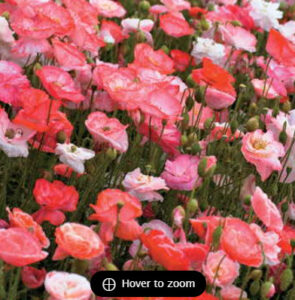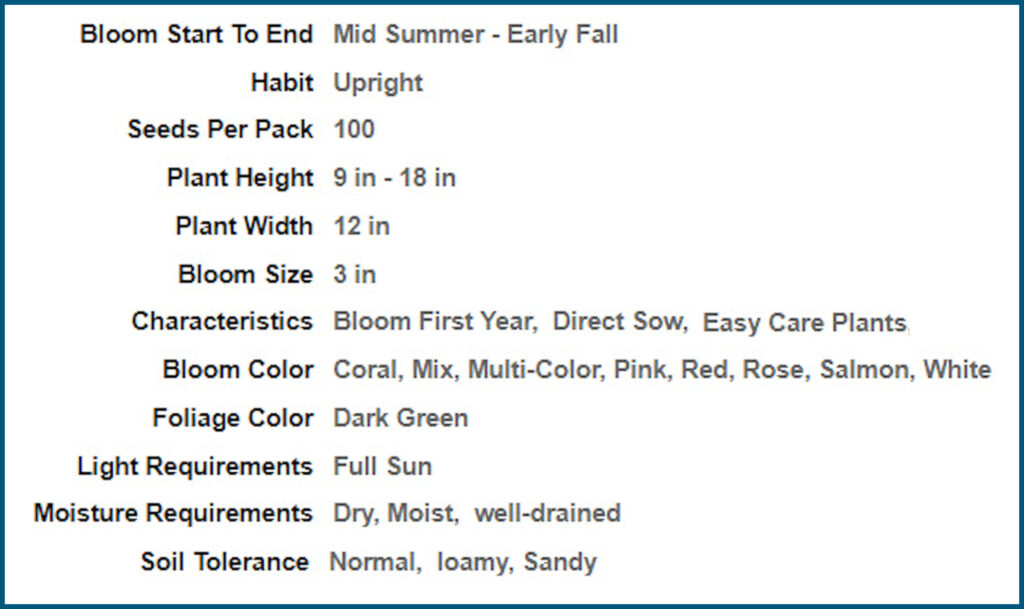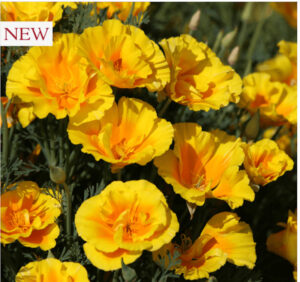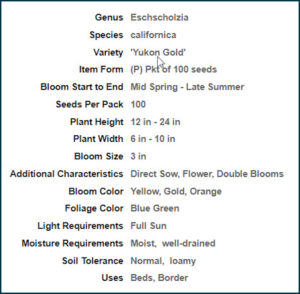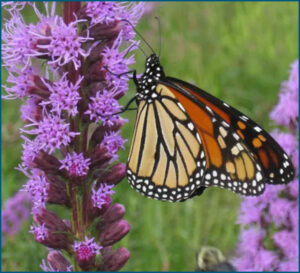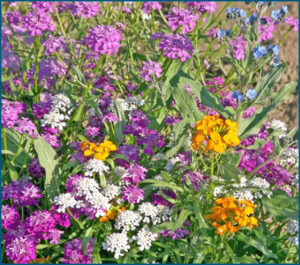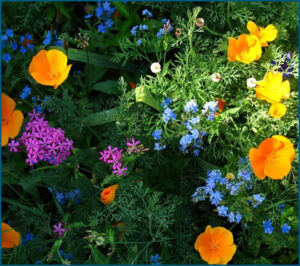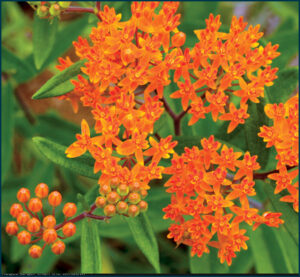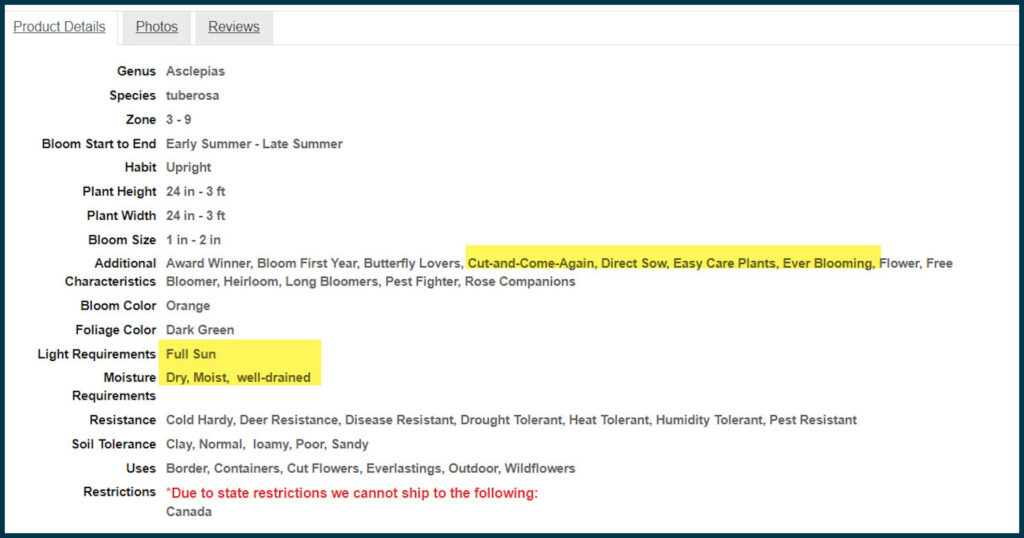| Direct sow in Fall: |
| Hummingbird Wildflower Mix Seeds
Annual and perennial varieties, all are open-pollinated, so they will set seed that you can collect or let self-sow for years of beauty. Mix Includes: |
| Poppy Seeds |
| Poppies: Select a sunny place with great drainage. Sprinkle seeds thinly throughout the area for creating natural drifts. Seeds take 7-30 days for germinating based on the soil condition, variety, and climate conditions. You have to keep the soil moist throughout germination.After the seedlings are big enough for handling, thin them to about 30 cm apart.
Keep watering the area daily, specifically throughout dry spells. Do not overwater your plants because this encourages leggy plants, quick growth, or also rot. The best time to grow Himalayan and oriental poppies is spring. If you are growing poppy in a container, then you have to replant it in the soil. Just dig a hole and put well-rotted organic matter into it. Now, remove your plant from its container and place it in the planting hole. Next, backfill this hole and place it firmly in place. Keep watering well! Sow your poppy seeds into the garden directly in autumn or spring. If you are planning to plant early, then it is best to plant between March and May. However, you need to wait till summer for a perfect display. If you like to have more flowers in the very first season, then slow between August’s end and October. This poppy thrives in many soils but if you want great results, then opt for well-drained soil. These plants thrive well in acid, neutral, or alkaline soil in full sun. The perennial oriental large poppies are great for growing in borders. These plants bloom in May and June and the foliage comes back to life again in August. You can plant them alongside low perennials like hardy geraniums, which fill up the gap perfectly when the foliage dies off. Cupped and rounded, the 3-inch blooms look like silk, and arise very heavily on plants 9 to 18 inches tall and 12 inches wide. Cut all you like—these blooms were made for displaying. Untroubled by most pests and diseases, and puts up with rough weather beautifully. The blooms begin in midsummer and continue into fall in most areas. California Poppies Are Easy to Grow California poppy seeds, which will germinate after the first fall rains, are very easy to grow, as they only need to be sown no more than about a quarter-inch deep in the fall or early spring (in mild, wet winter climates). Seeds will also germinate when the soil warms in the spring. California poppies are perennials in zones 9-11. They bloom in spring and their deep taproots support the poppies through summer dormancy until they return again in fall. Because of their deep taproots, California poppies do not transplant well, very similar to butterfly weed in this regard. |
|
Sown early fall and spring. (6” to 48” tall) Our ‘Partial Shade Wildflower Seed Mix’ is a premium blend of shade tolerant wildflowers that require only 4 hours minimum of sun each day (unlike most full sun wildflowers, which require 6-8 hours of sunlight.) This mixture contains 26 wildflowers. Look for quick blooming first-year color from 18 annual varieties, including Sweet Alyssum, Poppies, Sweet Pea, and Baby Snapdragon; Eight perennial and biennial varieties, including Purple Coneflower, Forget-Me-Not, and Four O’Clock, will appear in the second season and provide color for many years to come. This mix includes wildflowers ranging in height from 6” to 48,” for a tall, varied meadow. Plant ‘Partial Shade’ up against fencing, buildings, or trees, where sunlight is diminished. |
| How to plant your Perennial Garden: In spring after frosts, summer, or late fall after growing season ends, simply clear a spot with full sun. Remove all existing growth and till or loosen the soil. Then scatter your seeds evenly over the area, and compress into the bare earth. Do not cover with soil, peat, or anything else. (Walking over the seedbed does a good job.) Then water carefully and keep seedlings moist until they are 8-10 inches tall. Then water only as needed. Most perennials make only root and leaf growth their first year; all will bloom profusely their second year. During the first year, you’ll see full bloom of the annual baby’s breath in the mix which is included as a ‘marker species’ so you can see how your garden is growing. |
| Butterfly Weed seed
Butterfly weed should be planted in the early spring (after the final frost)—it will be slow to emerge, but will grow quickly once it does, hitting peak height and bloom in mid-to-late summer. Seeds can be sown directly outdoors in late fall or started indoors. When sowing seeds outdoors, work up the soil in a protected location in early to mid-November. Scatter the seeds over the prepared seed bed and then cover the seeds with approximately 1/4 inch of soil. The cold, moist conditions over winter improve seed germination. Seedlings should emerge in spring. Carefully transplant the seedlings to their permanent locations when the seedlings are 3 to 4 inches tall. |

